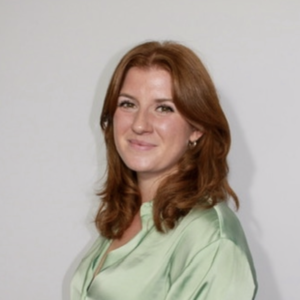3 min read
Understanding Talent Pools: The Conscious Quitters
Background Gender parity is stalling at best and at worst going backwards. In the UK alone, ECC’s research indicates that, across the banking,...
Insights to help leaders and organisations thrive and drive growth & inclusion.
Geraldine Gallacher Keynote Speaker
Speaker, podcaster, author and master coach.
Our resource hub for working parents, carers and managers navigating work-life balance.
Real stories from leaders driving inclusion & equity in today’s shifting world.
Fortnightly insights on leadership, equity & the future of work. For senior leaders & curious thinkers.
A monthly digest of the shifts shaping how we lead and work.
3 min read
 Phoebe Rees | Research & Impact Manager
:
Aug 8, 2024 9:48:49 AM
Phoebe Rees | Research & Impact Manager
:
Aug 8, 2024 9:48:49 AM

Gender parity is stalling at best and at worst slipping backward. In the UK alone, ECC’s research indicates that, across the banking, legal, and FTSE 350 sectors, 20,000 women must be promoted to achieve parity.
However, given attrition challenges, employees’ new expectations, and outdated talent models, more than fishing in one pool of ‘typical’ or ‘traditional talent’ is needed. Organisations must look beyond other previously untapped pools of talent. Women with the skill, experience, and ambition for senior leadership have not disappeared from your business. They are still there but stuck or overlooked by criteria used to identify and promote internal talent. To learn more about why segmenting your workforce of women by alternative talent pools is important and why it is essential to build a plan to engage these women, watch: Where have all the senior women gone’.
By reimagining talent as the four different pools ECC has identified through its research, the steps you can take to harness their potential. These are The Boundaried Workers, The Overlooked, The Conscious Quitters and The Lost Leaders. Here we explain The Overlooked.
Whilst this group is not just women, gendered work roles, biased definitions of leadership, and age-related penalties all contribute to women being overlooked. Women are three times more likely to return to lower-paid positions after a career break for children and struggle to advance from these "sticky floor " roles as quickly as their male counterparts.
At the same time, there is a loyalty penalty for those who stay with their employer. Later in their career, there is a further penalty as 39% of employers are less likely to recruit people over 50 and even fewer organisations at 35% are prepared to retrain staff over that age.
Talent models are not designed for women who are often downgraded in their leadership potential despite being recognised as high performers. Research has consistently shown this phenomenon, with one of the most extensive studies involving 29,000 managers revealing that women are 33% more likely than men to receive the highest performance ratings, yet simultaneously receive the lowest ratings for future leadership potential.
This is partly because criteria for evaluating leadership potential and opportunities are inherently biased towards male traits, such as the ‘take-charge’ behaviours described by Geraldine Gallacher in her chapter on the Double-Bind Dilemma in ‘Coaching Women: Changing the System not the Person’. It is also because research has shown how women are held to a higher standard than men and for example, at C-suite are judged against the performance of male leaders considered to be in the top 10 percent of executives.
If you start by acknowledging there are talented individuals that you have probably missed, you can begin to action plan how to realise this opportunity. This considerable pool of potential talent could help your organisation progress in gender equity if identified and harnessed. Understanding this segment of workers will help you and your leaders broaden their perspectives when they are identifying talent for development, stretch opportunities, and progression.
3. If you are ready to take the next step and embed a plan for positive change for your organisation then download ECC’s free Gender Assessment Planner. This evidence-based assessment tool will help organisations to develop and implement a tailored plan for progress in gender parity.
Or if you want to learn even more... please chat with someone at The Executive Coaching Consultancy.


3 min read
Background Gender parity is stalling at best and at worst going backwards. In the UK alone, ECC’s research indicates that, across the banking,...

Too many capable leaders are being missed. Learn how recognising ‘Lost Leaders’ can transform talent development and organisational impact.

1 min read
What does the Double Bind mean for women in the workplace? This concept has been used for decades in social psychology, but in application to...